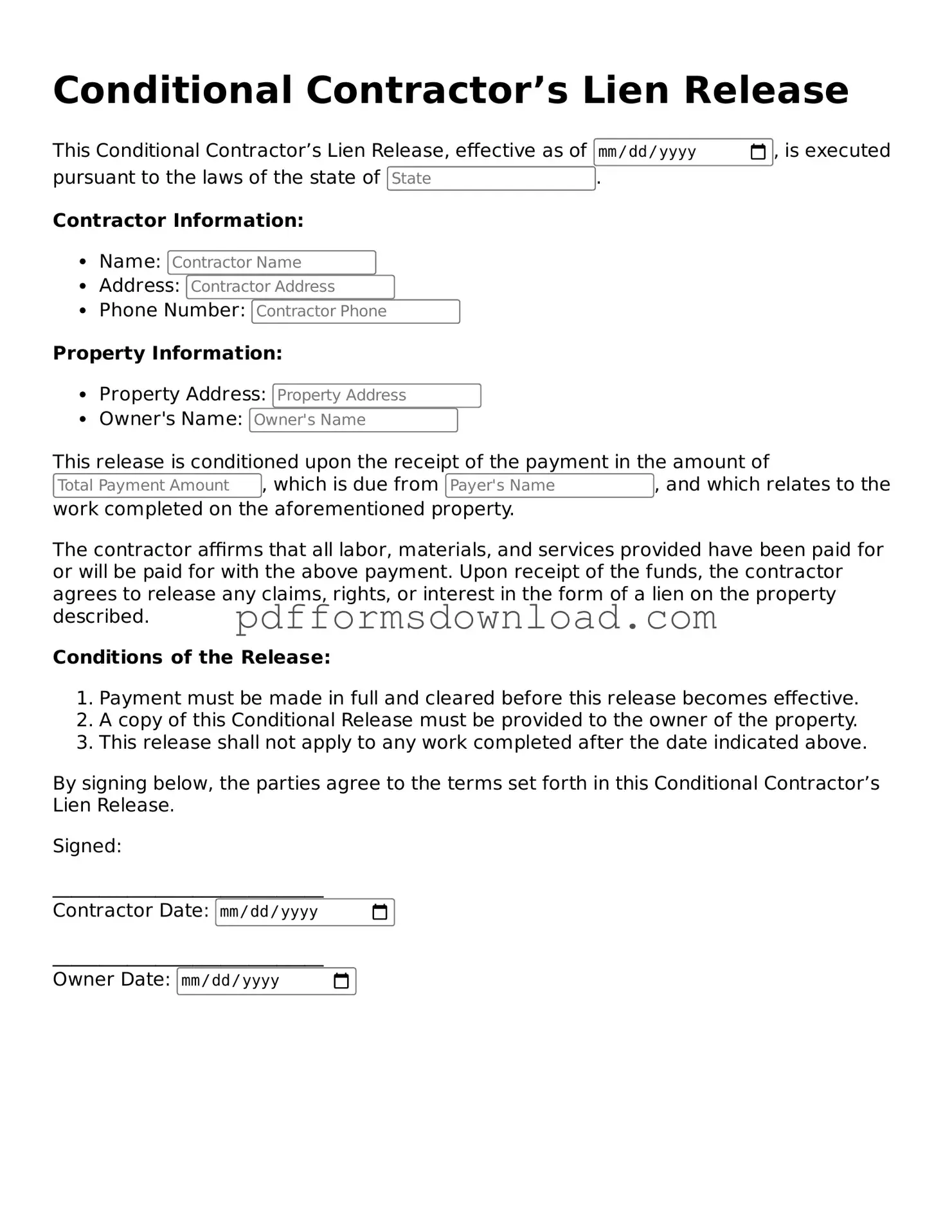What is a Conditional Contractor’s Lien Release form?
A Conditional Contractor’s Lien Release form is a document used in the construction industry. It allows a contractor or subcontractor to release their lien rights conditionally. This means that the release is valid only if the payment is received as specified in the agreement. It protects the contractor's right to claim a lien if payment is not made.
When should I use a Conditional Contractor’s Lien Release form?
This form should be used when a contractor or subcontractor is expecting payment for work completed. It is particularly useful when the contractor wants to ensure that they retain their lien rights until payment is confirmed. This form is often used in situations where a project is ongoing, and payments are made at various stages.
Who needs to sign the Conditional Contractor’s Lien Release form?
The form must be signed by the contractor or subcontractor who is releasing their lien rights. Additionally, the property owner or general contractor receiving the release should also sign the document to acknowledge the terms. Both signatures ensure that all parties are aware of the conditional release.
What information is required on the form?
The form typically requires the names of the contractor, subcontractor, and property owner. It should also include a description of the property, details about the work completed, the amount due, and the conditions under which the release is valid. Clear and accurate information helps prevent disputes later on.
Is a Conditional Contractor’s Lien Release form legally binding?
Yes, once signed by the appropriate parties, the form is legally binding. It serves as a formal acknowledgment of the release of lien rights under the specified conditions. However, it is important for all parties to understand the terms before signing to avoid any misunderstandings.
Can I revoke a Conditional Contractor’s Lien Release form?
Once the Conditional Contractor’s Lien Release form is signed and delivered, it cannot typically be revoked. However, if the conditions for payment are not met, the contractor may still have the right to file a lien. It is crucial to ensure that all conditions are clearly outlined in the form.
What happens if payment is not received after signing the form?
If payment is not received as outlined in the Conditional Contractor’s Lien Release form, the contractor retains the right to file a lien against the property. This is why it is important to have clear terms regarding payment included in the release. Contractors should keep a copy of the signed form for their records.
Can I use a Conditional Contractor’s Lien Release form for residential projects?
Yes, a Conditional Contractor’s Lien Release form can be used for both residential and commercial projects. It is a common practice in the construction industry to protect the rights of contractors and subcontractors in any type of project. Ensure compliance with local laws and regulations when using the form.
Where can I obtain a Conditional Contractor’s Lien Release form?
Conditional Contractor’s Lien Release forms can often be obtained from legal stationery stores, online legal form providers, or through a legal professional. It is important to ensure that the form complies with the specific laws of your state, as requirements may vary.
